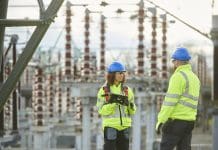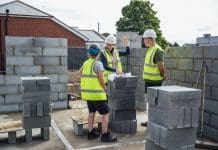With new research showing more than half of construction project managers now work remotely full-time, Professor Adam Boddison OBE, chief executive of the Association for Project Management, looks at the rise of hybrid working
Balance is an important concept across the built environment. Whether that’s a spirit level on site or project managing key stakeholders, it’s a well-rehearsed act of careful configuration that can easily go unnoticed or underappreciated.
And it is surely through the prism of remote work – or, more specifically, hybrid work – that this omnipresent balancing act is being most keenly felt and talked about right now, as the year’s closing chapters are crafted and we begin stargazing into 2024.
We all know the story. Barely anyone worked from home before the pandemic, even though the technology and demand had existed for at least a decade.
Remarkably, around two years have already passed since the ending of Covid’s main restrictions – a passage of time longer than the pandemic itself.
The accepted narrative heading into winter 2023 is that most people enjoy an even split between office and home; between on-site and remote work venues. We’ve adapted, we’re more productive, we’re more flexible, we’re happier. An equilibrium has been struck. The new normal is already here.
Tripled – fully remote PMs since Covid
Our new survey with national research company Censuswide shows more than half (54%) of project managers in construction are working fully remotely. This represents two significant developments:
First, it was the highest of 17 sectors that we polled in our research of over 900 project professionals. The average was 39% and 10 sectors fell below 40%, including retail (32%) and education (33%).
Second, and perhaps more pertinent, the figure for construction has more than tripled since October 2021, when it stood at just 16%. This was broadly in line with our survey’s average of 14% back then.
In other words, the proportion of fully remote project managers in construction has more than tripled since the grand reopening post-Covid.
Is this surprising? A cause for concern? A positive sign of cultural progression?
Typically, responsibilities for project managers include overseeing the planning and delivery of projects with a laser focus on timescales and budgets, as well as organising logistics, delegating work, shaping plans with architects, and liaising with clients and stakeholders.
Does location matter? If the work gets done efficiently and effectively, and the project is ultimately delivered on time and to budget, while ensuring the highest amount possible of individual needs are met, then is construction in fact leading the way?
How the other half live
Let’s look at the other 46% of our project manager respondents in construction.
One in six (16%) are in the office or on-site on a full-time basis. This compares with 36% in aerospace and defence and 27% in technology. Five other sectors scored under 20%, including manufacturing (15%), telecoms (17%) and transport (13%).
The remaining 30% are hybrid workers: a mix of office/on-site and home working.
We also looked into happiness and a quite staggering 88% said they are happy with their current way of working – above the average of 82%. Only four sectors scored better.
Just 7% said they were unhappy and 5% were neutral. Of the small unhappy cohort, all would welcome hybrid working that included more days in the office or on-site.
Remote control: A case study
“The swift move to homeworking (caused by Covid) demonstrated that we do not need to be sitting in an office to work efficiently and deliver a great service to our clients,” says Richard Burgham Pearson, an associate project manager at construction and property consultant Thomas & Adamson.
“Technology has quite evidently assisted with this change in approach to working, but the premise that we all need to be in the same place is incorrect.”
Richard has led meetings in multiple locations across the UK – even from a cabin in Canada for two weeks.
However, he cautioned: “Hybrid working is not for everyone; some don’t like the balance and prefer to either work the majority of time from home or indeed in the office. I think it’s important while working in a team to understand and embrace this.”
A flexible ending
A healthy work-life balance is paramount to employee wellbeing and can bring plenty of benefits to employers, too. Time, costs and environmental impact savings; focusing on deadline work; harnessing new tools: for example, updating Gantt charts in real-time to improve accuracy and accountability.
On the flip side, it must be recognised that employers face an increasingly complex set of factors impacting recruitment and retention, productivity and revenue while trying to accommodate conflicting individual requests.
Flexible, hybrid working strikes the healthiest balance between remote working and a brick-and-mortar presence.
However, construction employers must strive to ensure that the strengths and weaknesses of both old and new are fully understood and implemented so that effective project delivery continues to strengthen heading into 2024.
APM is the only chartered organisation representing the project profession in the world. Learn more here.
Professor Adam Boddison OBE
Chief executive
Association for Project Management
Tel: +44 (0)845 458 1944














